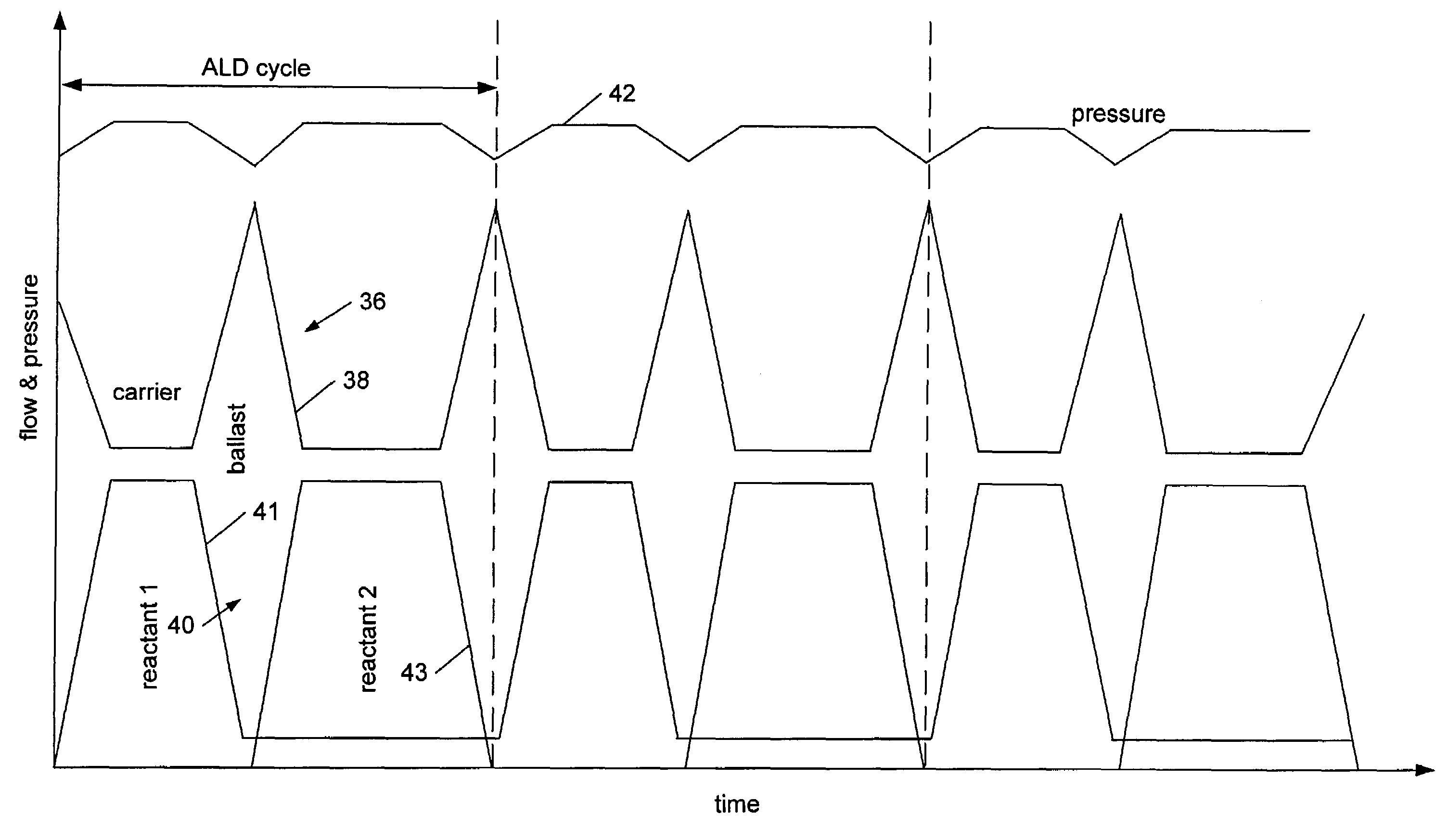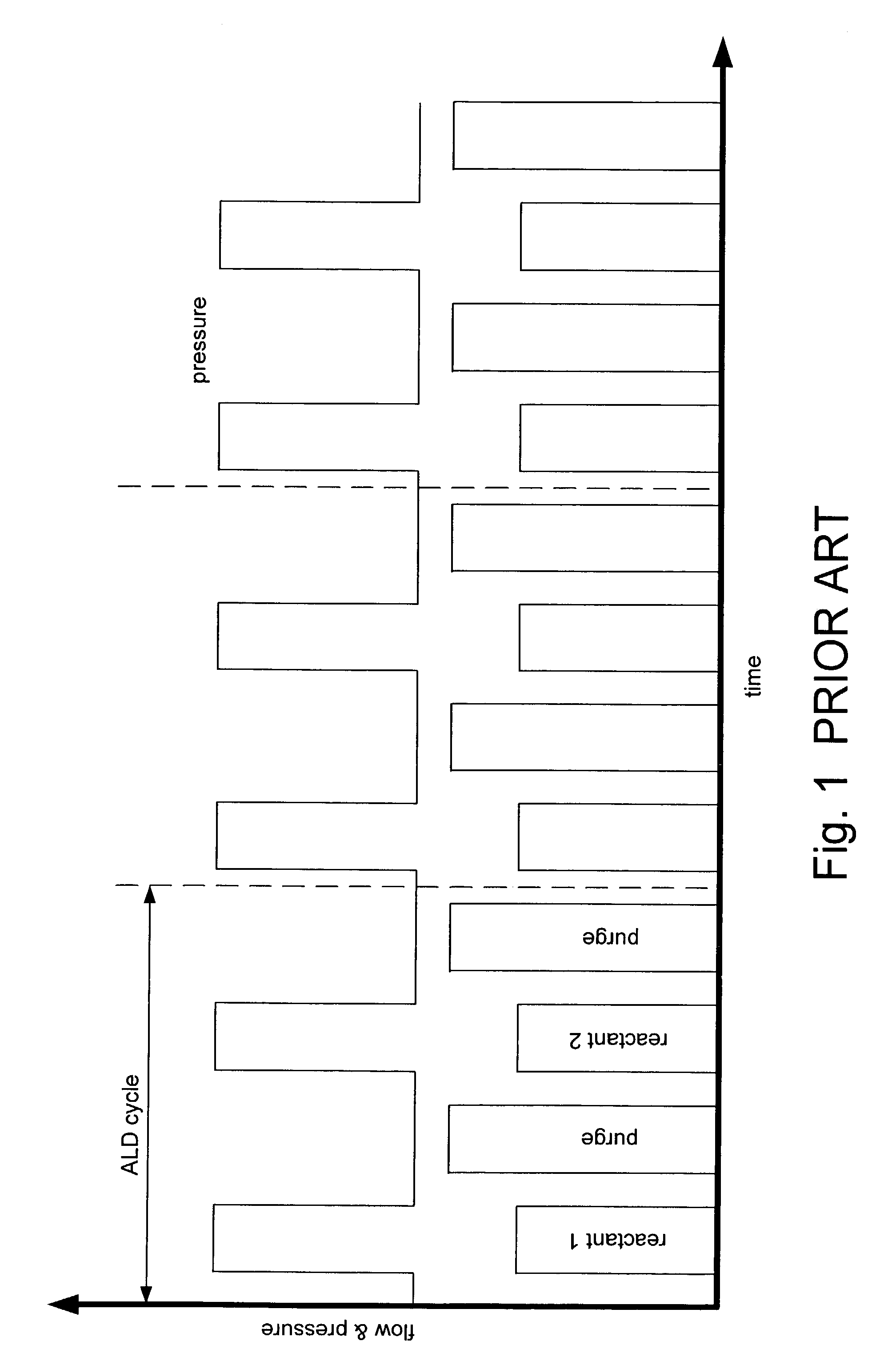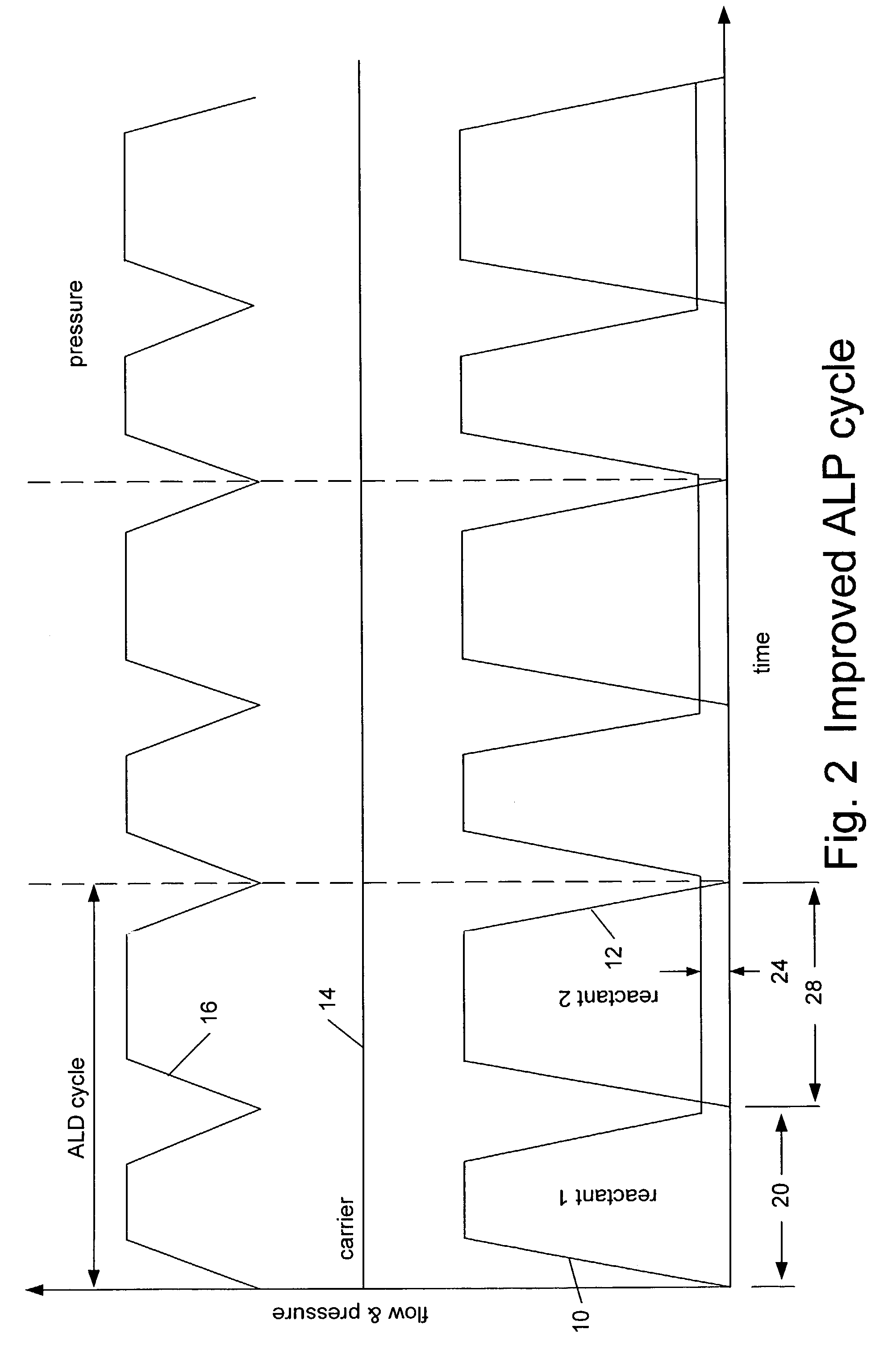Method and apparatus for layer by layer deposition of thin films
a thin film and layer deposition technology, applied in chemical vapor deposition coatings, coatings, electric discharge tubes, etc., can solve the problems of difficult implementation in a conventional reactor used for chemical vapor deposition, compromise the wafer throughput, and monolayer of films, so as to increase the wafer throughput for atomic layer processing, increase surface impurities, and increase the effect of alp throughpu
- Summary
- Abstract
- Description
- Claims
- Application Information
AI Technical Summary
Benefits of technology
Problems solved by technology
Method used
Image
Examples
Embodiment Construction
[0054]A preferred embodiment of the method of atomic layer processing of the present invention will now be explained in reference to the graph of FIG. 2 displaying the flow of reactants and a carrier ballast gas as a function of time. Flow of a first reactant gas is illustrated by a curve 10, and a second reactant gas by curve 12. The flow of a ballast / carrier gas is represented by curve 14, and the total gas flow by curve 16. The method of atomic layer processing gas flow is further described in reference to the flow chart of FIG. 3, describing the flow illustrated in FIG. 2. The carrier gas represented by line 14 (FIG. 2) is injected and maintained at a continuous flow rate (block 18). A first reactant gas (line 10, FIG. 2) is then injected according to a predetermined flow modulation contour for a first period of time represented as item 20 in FIG. 2, and as indicated in block 22. The modulation contour shown in FIGS. 2 and 4 is a trapezoidal shape. The present invention also inc...
PUM
| Property | Measurement | Unit |
|---|---|---|
| Flow rate | aaaaa | aaaaa |
Abstract
Description
Claims
Application Information
 Login to View More
Login to View More - R&D
- Intellectual Property
- Life Sciences
- Materials
- Tech Scout
- Unparalleled Data Quality
- Higher Quality Content
- 60% Fewer Hallucinations
Browse by: Latest US Patents, China's latest patents, Technical Efficacy Thesaurus, Application Domain, Technology Topic, Popular Technical Reports.
© 2025 PatSnap. All rights reserved.Legal|Privacy policy|Modern Slavery Act Transparency Statement|Sitemap|About US| Contact US: help@patsnap.com



